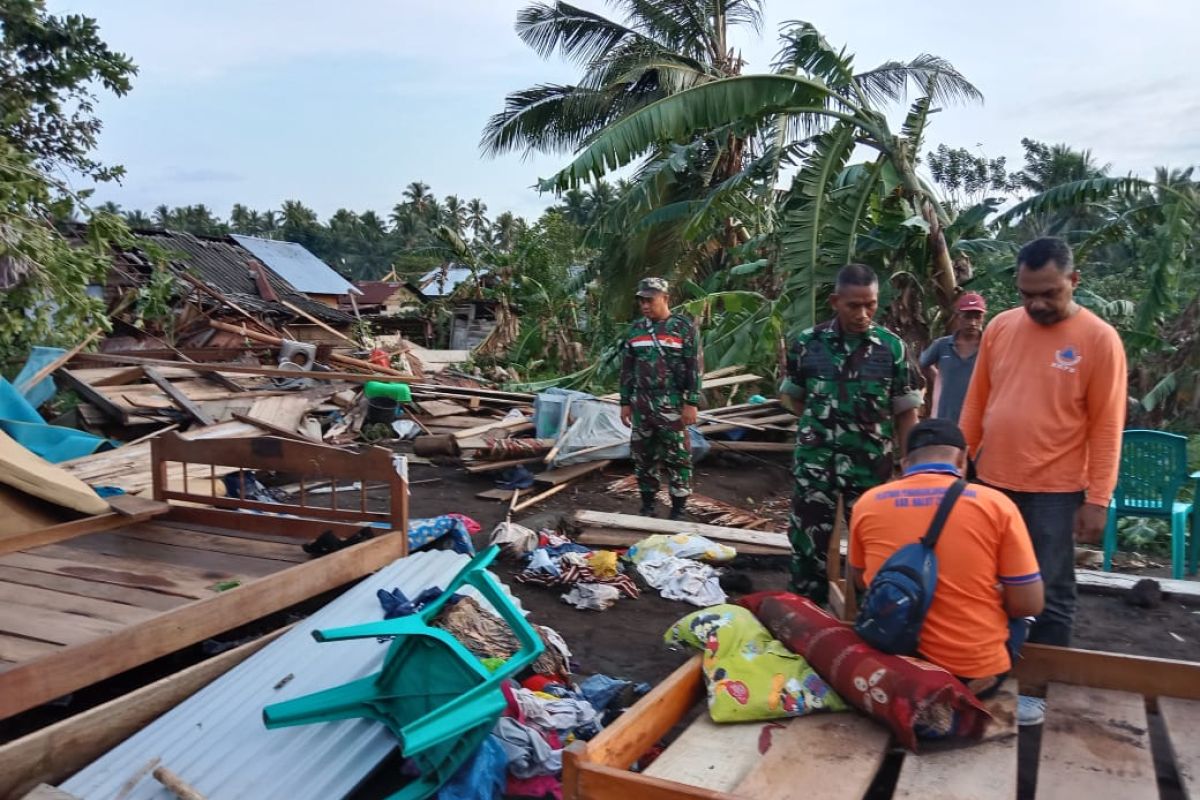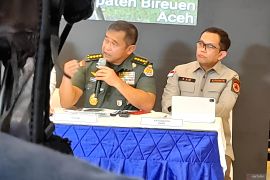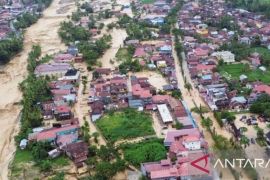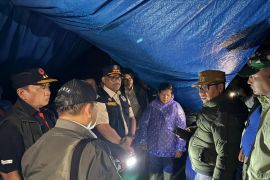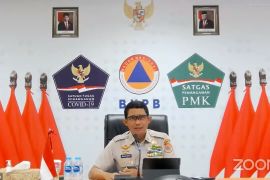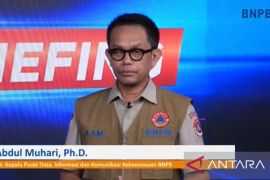Such mitigation can take any form: technological, for example, an early warning system; or traditional, such as ancestral techniques for building houses that reduce risks from flooding, or the use of a slit drum called tuddukat to broadcast news.
This year, Indonesia is hosting the 7th Global Platform for Disaster Risk Reduction (GPDRR). The event is taking place at the Bali Nusa Dua Convention Center (BNDCC), Badung district, Bali province, from May 23 to 28, 2022.
The event is being viewed as a great opportunity to showcase Indonesia's capability in mitigating disaster risks, as President Joko Widodo (Jokowi) stated earlier. By delving into its rich local wisdom and skills, Indonesia can show the many ways its people can maintain readiness for disasters:
Tuddukat from West Sumatra
According to anthropologist from Padang’s Andalas University, Dr. Mascota Delfi, tuddukat is a tool used by the Mentawai community to announce good news and sad news. A tuddukat produces sounds when it is struck.
Good news conveyed using the tuddukat usually pertains to a successful hunt. "That is why it sounds a bit fast and happy," Delfi said.
For conveying sad news like that of death, the tuddukat is struck slowly and very carefully so as to not cause any misunderstanding.
Delfi considers tuddukat as an effective messaging device among the Mentawai community that is still close to nature because it does not require electricity and the signal and sound can be heard from afar.
In the future, the tool can potentially be used to alert people when there is a natural disaster, he said. However, there will be a need for some creativity to ensure the sound can be commonly understood, he added.
Gampiri from Central Sulawesi
One of the concepts of local-based mitigation in Central Sulawesi province is the preparation of gampiri or food barns in every village in the region, culturalist from the province, Iksam Djorimi, informed.
The building of food barns is aimed at anticipating food crises that can occur at any time, such as during a pandemic affecting all parts of the world, he explained.
"Now, some remaining food barns are only (located) in the tourism areas in Sigi district. These barns play a huge role when the government implements public activity restrictions (PPKM). That is, their (the community's) food stocks are still very sufficient to meet their daily needs," Djorimi said.
Another disaster-mitigation step that is common among the local community is the prohibition on getting out of the house during an earthquake, he added.
Story-telling from Aceh
The mitigation capabilities of the Simeulue people of Aceh cannot be separated from their knowledge of linon and smong or earthquake and tsunami, which ravaged the Simeulue region in 1907, or 115 years ago.
The stories of disasters that claimed the lives of many humans and livestock were related for generations in the Simeulue area, so they stuck in the mind of every individual living in Simeulue.
The linon and smong story that relates the tragedy that once struck the island helped save more than 80 thousand people inhabiting 10 sub-districts of Simeulue district during the Indian Ocean earthquake and tsunami of December 26, 2004.
The story or hikayat is conveyed through song, and the lines are delivered in a local language:
....
Enggelmon Sao curito (Listen to this story)
Inang maso semonan (Once upon a time)
Manoknop sao fano (A place was inundated)
Wila dasesewan (It is what they told)
Unenne Alek Linon (Started with an earthquake)
Besang bakatne Malli (Followed by a very high wave)
Manoknop Sao hampong (The whole village was drowned)
Tibo-tibo Mawi (Suddenly)
Anga linonne Malli (If the earthquake is so strong)
Uwek surui sahuli (Followed by a low tide)
Mahea mihawali (Quickly find)
Fanome singa tenggi (A higher place of yours)
Ede Smong kahanne (This is what the smong is)
Turiang da nenekta (This history of our ancestors)
Miredem teher ere (Please remember it)
Pesan dan navida (The message and its advice)
The verse about linon and smong is considered a part of mitigation measures for Simeulue residents.
In addition, through the medium of syair or poems, people have also conveyed the tragedy caused by earthquakes and tsunamis in the past through traditional Nandong art and the nanga-nanga chanted by parents to their babies on swings.
Through poems, Simeulue residents continue to remind their descendants to remain alert to the possibility of disaster.
"This linon and smong story is conveyed in many ways, even (when) someone is just born; the story is told through this nanga-nanga," a Simeulue community leader, Sarman Jayadi, explained.
‘Titen,’ a Declining Javanese Skill
For Lilik Rudiyanto, an activist with the Merapi Merbabu Hijau Forum (FMMH) who resides on the Mount Merapi slopes, titen is one of the local wisdoms that emerged through a strong social system at the foot of Merapi.
Although titen cannot be used as the main strategy for monitoring Merapi activities, it can be an important disaster mitigation variable for local residents, he said.
According to him, such traditional wisdom or intelligence is easier for local people to understand to improve their preparedness.
However, while in the past, the sight of animals such as monkeys or deer flocking down from the top served as a sign that Mount Merapi was in a turbulent state, now such a phenomenon can no longer serve as a benchmark, he added.
Animals that come down from the top of the mountain no longer carry a message about Merapi's activities since they are mostly looking for food because their habitat and the natural ecosystem at the mountaintop have been damaged, he explained.
The use of titen or traditional Javanese skills to read natural signs needs to be integrated with rational awareness based on warnings and periodic information released by the Geological Disaster Technology, Research, and Development Center (BPPTKG), which monitors and processes data on Merapi's volcanic developments daily.
Related news: Disaster mitigation needs international cooperation: VP KallaRelated news: Gov't must push formation of disaster-resilient villages: academic
Editor: Rahmad Nasution
Copyright © ANTARA 2022
